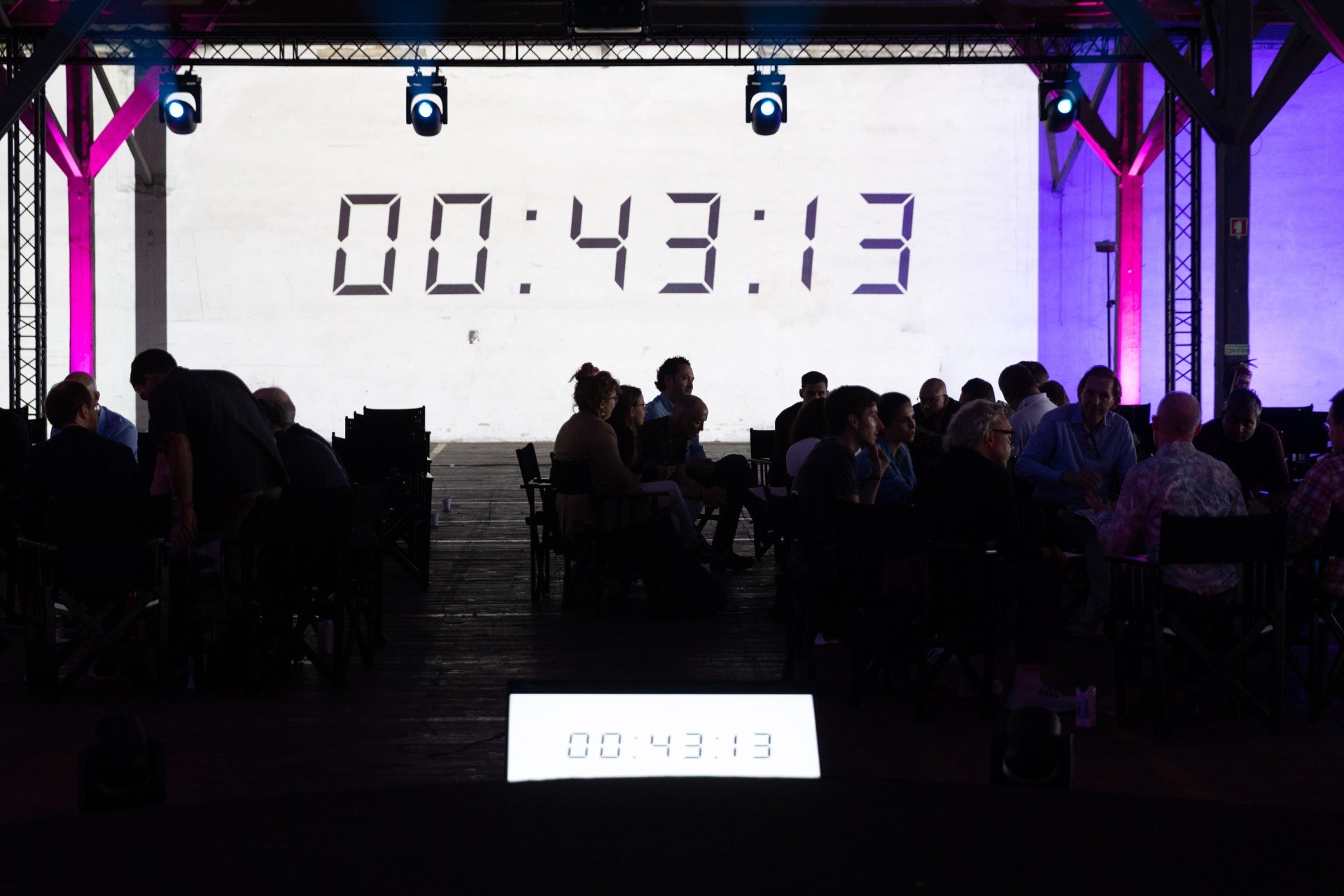Decisions!

Before making a decision about anything, you need to agree on something. That, as our collaboration experiment “I Bet You” on the closing day of Concrete Love ACTS proved, is already too much. After 45 minutes, unsurprisingly to some, devastating to others, we ended up with people relentlessly advocating for “my idea”—the opposite of the spirit of the challenge. As Resident and partner Karel Golta posted on LinkedIn: “As the last 10 seconds were running down . . . instead of at least just taking one single, even desperate measure, we had nothing better to do than to squirt with water guns laying around for our distraction. We lost the bet. We lost self-respect.”
Many decisions need to be made. Our organizations, our business models and processes, our personal lives—all human arenas, and yes, Earth, too, suffer from never-made decisions (which are, of course, decisions in themselves).
The reality of decision-making can be chaos! As above, too often it’s a descent into barely manageable entropy. It doesn’t help that we don’t always know what we want.
Whether we’re the type to make speedy decisions only to change tack six times before our next meeting, or the type to agonize over simple choices to the point of utter ineffectuality, the prospect of making a decision leaves many of us wishing for the wisdom of an all-seeing oracle, or at least a cost-effective machine-learning prediction tool.
This week, let’s make concrete and loving decisions—using every lever we can find, including one another, including this beautiful community.
First decision: do you want the next four weeks of ACTIONS? It's not too late—get your Virtual Pass here.

A mind for our mind
The human brain is bad at handling supermassive quantities of information. Our minds evolved to work using a lot of neural shortcuts, skipping the time-consuming effort of deliberation for a method that provides accurate results pretty reliably. Most of the time, we can look at a few pieces of information and come up with the right answer very quickly. But these workarounds—or cognitive biases—often fail us. As Dave and Helen Edwards write in their forthcoming book, Mind for Our Mind:
We favor information that supports our current beliefs because if we changed our models of the world everytime we encountered new information, we would not survive in a noisy and unpredictable world.... All our choices include bias, noise, missing information, unknowable factors, errors in data, and interactions with the choices of intelligent others, whose actions are partly the result of ours.
Enter AI. The key to using artificial intelligence to aid in our decision-making is to employ it where its skills complement our own. In some areas, we’re still smarter than computers. Humans, for example, are very specific, “with pathologists almost never mistakenly misidentifying cells as cancerous when they are not,” Helen and Dave write. But AI is better at dealing with large amounts of data—without ever getting distracted or bored. “Machines are impressive at their ability to spot even very tiny tumors...The machine happily sorts through thousands of images looking for every lesion while the doctor decides which lesions are harmful.”
For more on the smartest ways to use AI—and an explanation of how it can be used as a “mind for our mind”—join us tomorrow at 18:00 GMT. As Helen and Dave write, “We are our choices.” Perhaps we can all make better decisions with the help of machines.
Rethink everything you think you know
Coming up this Wednesday, as part of two Zoom sessions planned for the day, we’ll hear from Kenneth Cukier about “framing,” which, as he argues in Framers: Human Advantage in an Age of Technology and Turmoil, is one advantage humans have over machines.
Sure, AI can process tons of information, testing, observing, and crunching numbers in the blink of an eye, but it’s us humans who tell the algorithms what to look at. We’re the ones framing the questions—and framing, as Cukier writes, relies on the richness of the mental models that we already possess:
We use mental models all the time, even if we are not aware of them. But there are moments when we are acutely conscious of how we size up a situation, and can deliberately maintain or change our perspective. This often happens when we need to make a high-consequence decision, such as whether to switch jobs, become a parent, buy a home, close a factory, or build a skyscraper. In those instances, it can become apparent to us that our decisions are not simply based on the reasoning we apply, but on something more foundational: the particular lens through which we look at the situation—our sense of how the world works.
For more on how framing works—and how we can become better at using it—join us this Wednesday at 20:00 GMT.
Check out the full program and join us!


